
Top 10 Dog Food Production Line Supplier 2025: Which Companies Lead the Industry?
Making homemade dry dog food is a rewarding way to ensure your pet receives balanced nutrition
Braid Dog Chews Processing Line is a fully automatic and specialized production system designed for manufacturing high-quality braid dog chews. These chews are typically made from rawhide, meat paste, or plant starch, braided into durable, palatable shapes ideal for canine dental health and chewing satisfaction.
The line integrates material mixing, extrusion, braiding, cutting, drying, and optional flavoring and packaging processes. It ensures consistent product quality, hygiene, and high output capacity. Customizable configurations allow production of different braid styles (2-strand, 3-strand, or multi-strand), sizes, colors, and flavors, meeting diverse market needs.
Used for Braid Dog Chews Production.

| Model | Output | Installed Capacity |
|---|---|---|
| DR – BF2 | 150kg/h | 85kw |

Looking to create a unique pet food product? We provide full customization services, from concept to finished machine. Our engineering team uses CAD and 3D modeling to bring your ideas to life—fast and accurately. Let’s work together to build your next best-seller.
The Braid Dog Chews Processing Line consists of five key components: a Control Cabinet for intelligent system management, a Tri-barrel Extruder for uniform shaping of raw materials, a Cooling Conveyor to stabilize product form, a Cutter for precise length control, and a Braids Former that automatically weaves multiple strands into durable, appealing braided chews. The system includes:
① Control Cabinet
② Tri-barrel Extruder
③ Cooling Conveyor
④ Cutter
⑤ Braids Former

The Bird Seeds Bar Processing Line is a fully automated solution designed to produce high-quality seed bars efficiently and hygienically. Below is a step-by-step overview of how the line operates:
The Bird Seeds Bar Processing Line works through a fully automated process, including the following key steps:
The entire process is controlled by a central PLC system, ensuring efficiency, consistency, and minimal manual intervention.
Choosing the Darin Braid Dog Chews Processing Line means investing in performance, reliability, and innovation—all backed by years of experience in food processing machinery. Here’s why leading pet food and snack manufacturers worldwide choose Darin:

Motors from Darin Machinery are sourced from WEG with a 3-year worldwide guarantee or Siemens.Enjoy a reliable global after-sales service system.
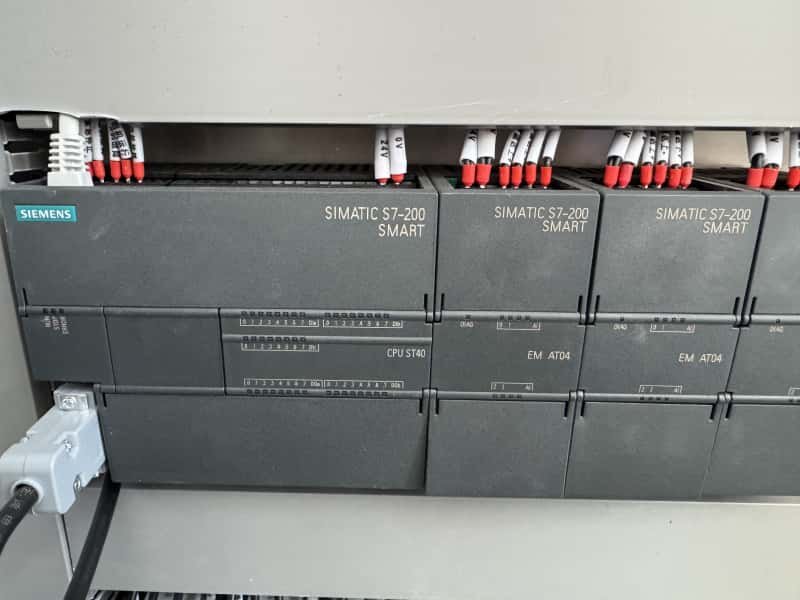
Electric parts are from ABB or Schneider, easy to find replacments at local market.

PLC and touch screens from Siemens, Germany, are used by Darin Machinery to ensure easier operation and reduced labor requirements.

When faults occur, Darin Machinery’s touch screens display relevant information, making it easy to diagnose and resolve issues quickly.

Darin Machinery control cabinets are equipped with 24V safe voltage, ensuring operator safety even electrical leakage occurred.
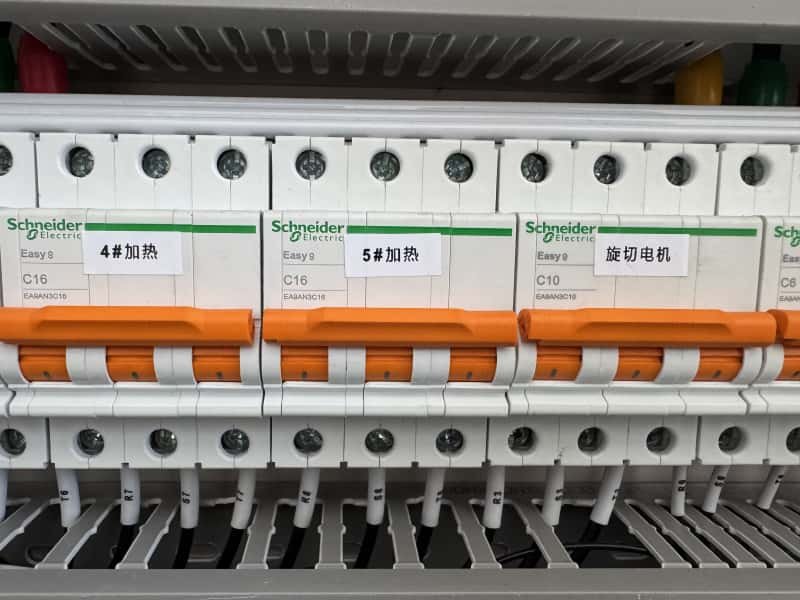
Darin Machinery includes three types of protectors over-current, over-voltage, over-heat to ensure machine and operator safety.
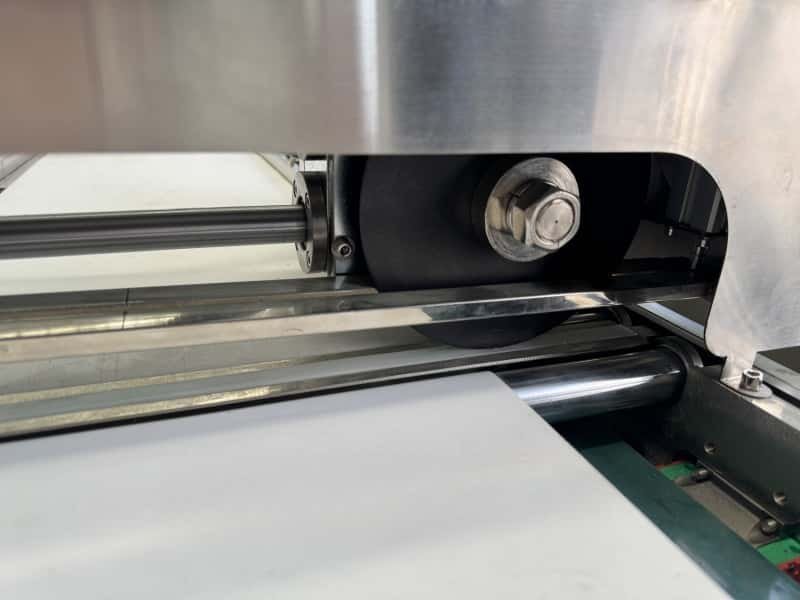
Servo follows the cutting size more accurately, rolling cutting can cut products with strong toughness, such as cowhide products, and the cutter does not cut the conveyor belt.
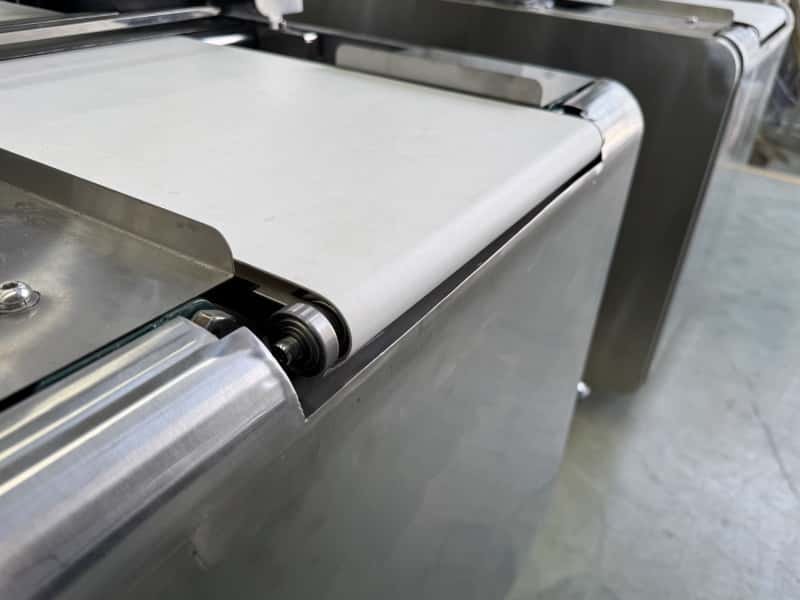
The end of the conveyor belt has a small turning radius, which makes material transportation smoother.

Its components are arranged for quick disassembly, ensuring efficient upkeep and hygienic operation.
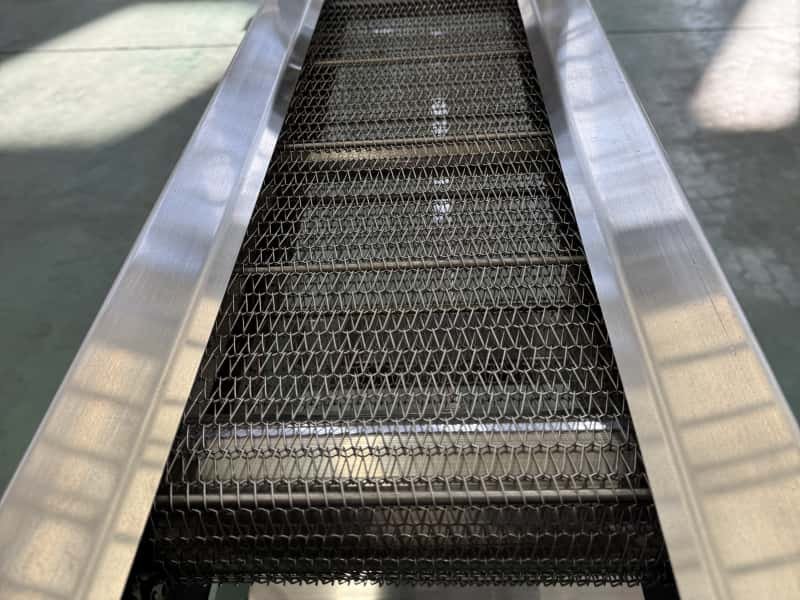
All cover bodies, mesh belts, and parts in contact with materials at Darin Machinery are made of food-grade stainless steel 304, providing superior durability and safety.
Darin® Machinery is global leading manufacturer of pet food production lines, Darin® provide full-cycle, one-stop production equipment solutions for all types of pet food, pet treats & pet health products.
■ All machinery is certified with European CE Approval & ISO 9001 Certification.
■ Run in 99+ countries including USA, Germany, Japan, Italy, UAE, Australia etc.
■ Machinery Supplier of General Mills, Kelloggs, Melinda, Bill Gates foundation & Wanpi.
■ 290+ Invention patents & utility model patents.
■ Government-certified high-tech enterprise.
■ Member of APPA (USA) & Deputy President Unit of SDPIA.
■ Professional food machinery manufacturer with 18 years of experience.
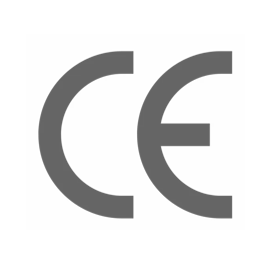

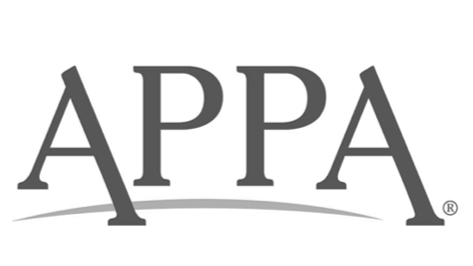
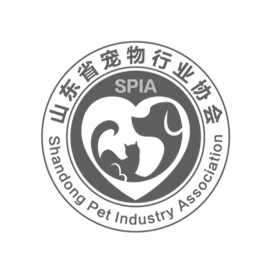


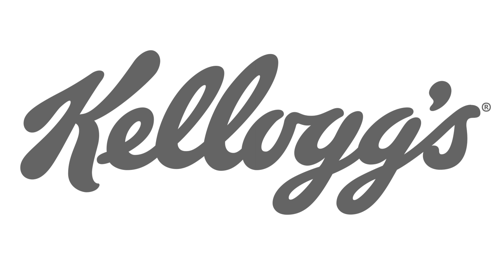
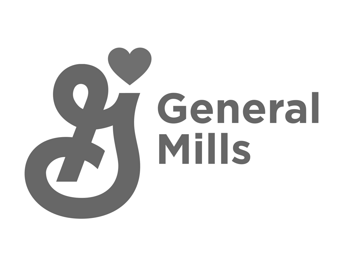
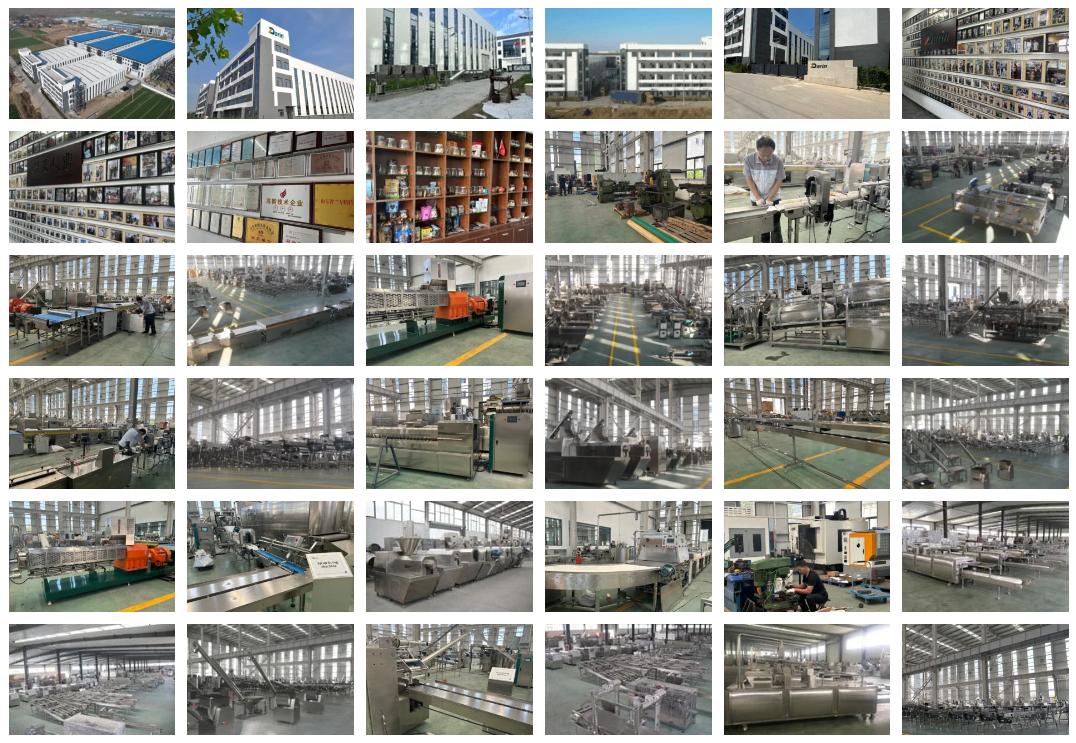
Our extensive product range includes production lines for pet dry food, wet food, semi-moist food, and raw food, as well as common pet treats such as biscuits, jerky, dental chews, rawhide chews, and training treats. Additionally, we offer various food machinery production lines, puff snack machines, energy granola bar machines, and support equipment.
Darin Machinery’s equipment is operational in over 99 countries and regions, including the USA, Germany, Japan, Italy, Spain, the Netherlands, Australia, Canada, Holland, Saudi Arabia, Brazil, Mexico, Indonesia, Thailand, and more. Darin Machinery serves renowned clients worldwide, including General Mills, Kellogg’s, and the Bill & Melinda Gates Foundation, among top-tier pet food suppliers.
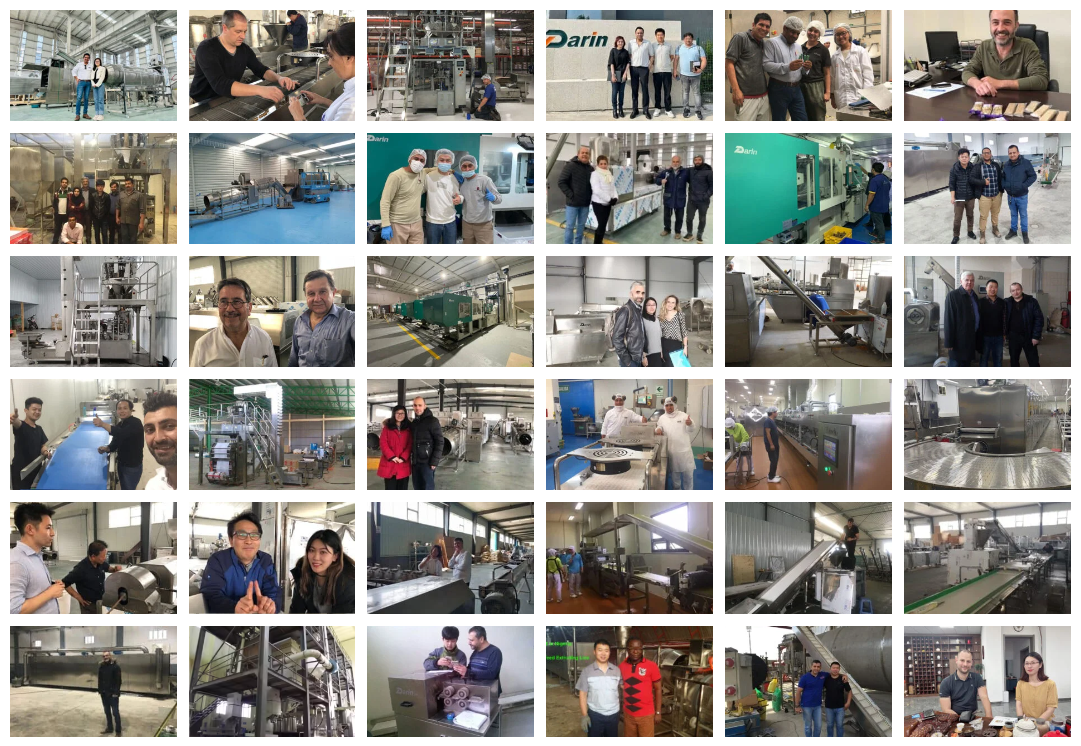


When purchasing the Braid Dog Chews Processing Line, you might be interested in the following questions.
The Braid Dog Chews Processing Line typically offers flexible production capacities to suit various business scales. Here’s a breakdown of the common capacity options:
Small-Scale Line
Capacity: 50–100 kg/h
Ideal for: Startups, pilot production, or niche products
Medium-Scale Line
Capacity: 100–200 kg/h
Ideal for: Medium-sized pet treat manufacturers
Large-Scale Line
Capacity: 200–400 kg/h or more (customizable)
Ideal for: Industrial pet food factories or OEM production
If your production requirements fall outside these ranges, the line can be custom-designed to meet specific throughput goals by adjusting:
Number of forming units
Conveyor belt speed
Braiding stations
Drying capacity
Would you like help choosing the right capacity based on your target market or production goals?
Great question! The Braid Dog Chews Processing Line is designed to work with a variety of pet-safe, chewable raw materials, ensuring both flexibility and high product quality. Below are the main raw materials and input specifications:
Starch (Corn, Potato, Tapioca, etc.)
Function: Provides structure and chewiness
Moisture: ≤14%
Mesh Size: 60–80 mesh for better mixing
Glycerine (Food Grade)
Function: Adds flexibility and palatability
Inclusion Rate: Typically 10–20% of total formula
Specification: 99.5% purity, USP/FCC grade
Meat Powder / Meat Meal (Chicken, Beef, Fish, etc.)
Function: Increases protein content and flavor
Mesh Size: 60–100 mesh
Moisture: ≤10%
Gelatin / Collagen (Optional)
Function: Adds elasticity and supports dental health
Vegetable Fiber / Cellulose Powder
Function: Improves digestion and texture
Flavorings, Colorants, and Preservatives (Pet-safe only)
Function: Enhances taste and appearance
Inclusion Rate: As per formulation requirements
Mixing Ratio: All materials should be uniformly blended before feeding into the extruder or forming unit.
Form: Dry powders or paste, depending on process step.
Pre-treatment: No cooking required, but sieving and weighing are essential for accuracy.
Moisture Content of Final Dough: Around 20–25% for smooth braiding and shaping.
Let me know if you need a sample formula or want help with a custom recipe for your target market (e.g., grain-free, high-protein, etc.).
The Braid Dog Chews Processing Line typically comes with several important certifications to ensure the equipment meets international quality and safety standards. These certifications include:
CE Certification
Purpose: Ensures that the processing line complies with European Union (EU) health, safety, and environmental protection standards.
Scope: Indicates that the equipment meets EU standards for safety and performance, ensuring reliability and compliance in European markets.
ISO 9001 Certification
Purpose: Represents the manufacturer's adherence to international quality management standards.
Scope: Focuses on quality control processes, ensuring consistency in production and customer satisfaction. ISO 9001 is a widely recognized standard for quality management systems.
ISO 22000 Certification
Purpose: Ensures food safety management systems, which is critical in the production of pet food.
Scope: Guarantees that the processing line meets safety standards for pet food production and controls hazards at every stage of production.
FDA Compliance (for U.S. Market)
Purpose: Ensures that the processing line complies with the U.S. Food and Drug Administration (FDA) regulations for pet food manufacturing.
Scope: Required if the equipment is used to manufacture dog treats or other pet products intended for sale in the United States.
UL Certification (for Electrical Safety)
Purpose: Demonstrates that electrical components meet U.S. safety standards for safe operation.
Scope: Covers safety of the electrical systems in the processing line.
RoHS Compliance
Purpose: Restricts the use of hazardous materials in the manufacturing of the processing line.
Scope: Ensures that the equipment is free from certain dangerous materials like lead, mercury, and cadmium.
Braid Dog Chews Processing Line is designed to meet various international market requirements, making it suitable for use in regions like the European Union, the United States, and other global markets.
These certifications provide confidence in both the safety and efficiency of the machinery, ensuring that it meets the necessary standards for food and pet treat production.
Would you like to learn more about any specific certification or compliance for your region?
Yes, the Braid Dog Chews Processing Line is highly customizable to accommodate different braid shapes, sizes, and formulations. Here’s how it can be tailored to meet your specific production needs:
Braid Shapes and Sizes:
Shape Variations: The processing line allows for flexibility in the braid pattern (e.g., single, double, or triple strands) and length of the braided dog chews. You can adjust the number of strands in the braid to create unique shapes that appeal to different pet preferences.
Size Adjustments: The diameter of the chews can be customized, allowing you to produce thick or thin braided treats based on your market requirements.
Custom Molds: Optional molds and shaping tools can be introduced to form special shapes or patterns for branding purposes or for meeting pet dietary needs (e.g., dental care, long-lasting chews).
Formulation Flexibility:
Ingredient Ratios: You can adjust the proportions of ingredients (e.g., starch, glycerine, meat powder) to create a soft or hard texture, depending on the desired chewiness of the treat.
Flavor & Color Additives: Custom formulations can include flavors, colors, or special dietary ingredients (e.g., grain-free, hypoallergenic, or high-protein), catering to specific consumer needs.
Moisture Content: The line allows for adjustable moisture levels to control the chew texture, ensuring that treats are suitable for different dog breeds or usage (e.g., quick chew vs. long-lasting chew).
Production Speed and Batch Size:
The production speed and batch size can also be adjusted based on the customization, ensuring that the line meets the demands of both small-batch or large-scale production runs.
Braid Density: You can modify the tightness of the braids to make them more or less dense, affecting both texture and chewability.
Diameter Adjustment: The extruder system is designed to handle different diameters, allowing you to produce a wide range of chew sizes.
Shaping Devices: The inclusion of optional shaping or pressing devices gives the ability to form unique shapes or textures within the braid.
This level of customization makes the Braid Dog Chews Processing Line ideal for producing a wide variety of dog treats that stand out in the market, whether you're focusing on specific breed preferences, unique shapes, or specialized formulations.
Would you like assistance in designing a customized solution for your production needs?
The Braid Dog Chews Processing Line is versatile and can produce a wide variety of end products to meet different market demands. Here’s a list of the main types of end products that can be produced using this line:
Braided Dog Chews
Description: The primary product of the processing line. These are dog treats made from braided strands of dough, offering a chewy texture and a satisfying chewing experience.
Custom Options: Braided chews can be produced in different shapes (single, double, or triple strands) and sizes, depending on breed preferences and customer requirements.
Dental Chews
Description: These are specifically designed to promote oral health by helping to clean teeth and massage gums during chewing.
Customization: They can be made with added ingredients like dental aids, flavored pastes, or anti-bacterial agents to enhance their dental benefits.
Flavored Braided Dog Treats
Description: Braided chews that come in various flavors to attract pets, such as chicken, beef, fish, or bacon.
Customization: The line can be adapted to use natural flavors, coloring agents, and protein-enriched formulations for different dietary preferences.
High-Protein Chews
Description: These chews are made with higher concentrations of meat powder or protein-based ingredients to meet the dietary needs of active or high-energy dogs.
Ideal for: Dogs requiring additional protein in their diet, such as working dogs or athletic breeds.
Grain-Free Dog Chews
Description: For dogs with grain allergies or sensitivities, the line can be used to produce grain-free braided chews, often using alternative flours like sweet potato, pea flour, or tapioca starch.
Customization: Can include additional ingredients such as vegetables, fruits, or superfoods.
Long-Lasting Chews
Description: These chews are designed to be more durable and long-lasting, providing extended chewing sessions for dogs.
Customization: Typically, the line adjusts moisture content and ingredient formulation to ensure that the treats are harder and more resistant to chewing.
Functional Chews (e.g., Joint Health, Digestion Support)
Description: These are dog chews with added functional ingredients like glucosamine for joint health, prebiotics for digestion, or omega-3 fatty acids for coat health.
Customization: These treats are formulated with additional health-promoting supplements tailored to the needs of dogs with specific health concerns.
Mini or Bite-Sized Braided Chews
Description: Smaller-sized braided chews, suitable for puppies or small dog breeds.
Customization: Size and shape can be adapted for younger dogs or smaller breeds.
Extruded and Baked Variants (in addition to braided)
Description: In addition to braided chews, the line may allow the production of extruded or baked dog treats if you need different textures or product types, such as bite-sized crunchy snacks.
Customization: These chews can also have a variety of flavors and shapes.
Engaging & Durable: The braided design encourages longer chewing sessions, helping to reduce anxiety and improve dental health.
Customizable for Nutritional Benefits: Can be tailored to meet specific dietary needs, such as high-protein, grain-free, or functional ingredients for joint care or digestion.
Market Versatility: The ability to produce various shapes, sizes, and flavors enables targeting different customer segments, from puppies to senior dogs.
If you'd like to explore specific formulations or additional product ideas, feel free to reach out!
The energy consumption and utility requirements for the Braid Dog Chews Processing Line are crucial factors to consider for efficient production and proper setup. Here’s a breakdown of the main requirements:
Electricity:
Average Power Consumption: Typically, the power consumption for a full processing line ranges from 20 kW to 85 kW depending on the size and level of automation of the line.
Key Electrical Components:
Mixers: Power is required to mix raw ingredients.
Extruders or Presses: These machines require substantial electrical power for shaping and forming the chews.
Oven/Heaters: Used for baking or drying the treats.
Conveyors and Packaging Machines: These also require electrical input for smooth operation.
Power Supply:
Voltage: The system is typically designed to work with 380V or 220V (depending on the region) three-phase power.
Frequency: The system usually operates at 50Hz or 60Hz.
Water Requirements:
Cooling Systems: Some models may require water for cooling systems, especially for cooling the extruder or press, which might use around 5-10 liters/hour.
Cleaning: Water is also needed for routine cleaning of machines and components, especially if the line involves wet ingredients or sticky formulations. A cleaning system might consume about 20-30 liters per wash cycle.
Water Quality: The water used should meet general industry standards (clean, non-corrosive) to prevent any damage to machinery or contamination in the production process.
Compressed Air:
Pressure Requirement: The processing line may require compressed air at a pressure of around 6-8 bar (87-116 psi) for operating pneumatic components like certain conveyors, cutters, or packaging equipment.
Air Consumption: Typical air consumption for such lines can range from 0.5 to 1.5 cubic meters per minute (m³/min) depending on the equipment configuration.
Ventilation and Exhaust:
Proper ventilation is required to manage heat generated from the baking or drying process.
Exhaust systems may also be necessary to remove any fumes or odors, especially if baking is involved in the production process.
Space Considerations:
The equipment should be installed in a well-ventilated area with enough room for the various machines (mixers, extruders, ovens, and cooling systems).
Ensure that the power supply, water, and compressed air are easily accessible and have enough capacity to meet the machine's demand.
The line is designed to optimize energy consumption to maintain a sustainable and cost-effective production process.
Energy-efficient motors and drives are often used in modern lines to help reduce overall energy use.
Variable frequency drives (VFD) may be used in motors to adjust energy consumption based on actual demand, contributing to lower electricity costs.
Would you like assistance in calculating specific energy costs based on your production volume?
Yes, the Braid Dog Chews Processing Line typically requires a specific factory layout or footprint to ensure smooth operation, optimize workflow, and meet safety and efficiency standards. Here’s a general overview of the factors to consider for the layout and footprint:
Space for Equipment:
The full processing line includes several pieces of equipment such as mixers, extruders, presses, ovens, cooling systems, and packaging machines.
Ensure that there is sufficient floor space for each of these components, along with enough clearance for maintenance and operational movement.
Typical Footprint: The total space required can vary depending on the scale and level of automation of the line. For a standard line, you may need around 200 to 500 square meters of space.
Material Flow:
Plan for the flow of materials through the production process to minimize backtracking or unnecessary movement.
Raw Material Storage Area: Space for storing ingredients like starch, glycerine, meat powder, etc.
Production Area: Should allow for a smooth transition between the mixing, shaping, baking, and cooling phases.
Packaging Area: Ideally located near the final stage to streamline the process.
Make sure there is enough room between machines for workers to operate them safely.
Access and Maintenance:
Ensure that there is adequate access to each machine for maintenance, repairs, and cleaning.
Leave sufficient space between machines and workstations to allow personnel to perform preventive maintenance and repairs without difficulty.
Utility Access Points:
The layout should allow for easy connection to electricity, water, compressed air, and ventilation systems.
Ensure the power supply and compressed air systems are easily accessible and meet the equipment’s requirements.
Water drainage systems should be planned near cleaning areas and equipment like ovens or cooling systems that require water.
Mixing and Preparation Area:
This is where raw ingredients are combined. It’s usually located at the start of the line and should be spacious enough to accommodate mixers and ingredient silos.
Shaping and Braiding Area:
This area requires ample space for the extruder or braiding machines. Proper ventilation should be considered here, as some machines may emit heat or moisture.
Baking or Drying Area:
Ovens or dryers should be placed in a well-ventilated area. Depending on your layout, you may also need exhaust systems to manage heat and fumes.
Cooling and Packaging Area:
The cooling system is typically placed after the baking or drying area. The packaging machines are located afterward, near the exit for easy transfer of finished products.
Space for finished products storage or temporary holding should also be planned.
Power Distribution: Ensure that your facility’s electrical system can support the power requirements (e.g., 380V three-phase power).
Compressed Air Supply: Ensure you have the required air pressure and volume to run pneumatic systems across the line.
Water Supply: Ensure an adequate water supply for cooling systems and cleaning purposes.
Ventilation: Proper ventilation is required in areas with heat-generating machines like ovens or extruders.
Safety Clearance: Follow safety guidelines regarding machine clearance and operator access. There should be appropriate emergency exits and fire safety systems in place.
Compliance with Standards: Ensure the layout complies with local regulatory standards for hygiene, safety, and environmental protection.
If your business plans to expand production in the future, consider leaving extra space for adding machines or upgrading capacity. A flexible layout will help accommodate future growth without requiring significant modifications.
Ensure there is a loading/unloading dock for easy delivery of raw materials and shipping of finished products.
Consider the workflow efficiency when designing storage areas and delivery routes within the factory.
In summary, careful planning of the factory layout is essential for optimizing the production process, ensuring safety, and maintaining efficiency. The exact layout will depend on the specific scale and configuration of your Braid Dog Chews Processing Line, but it’s important to account for adequate space, utilities, and safety measures. Would you like assistance with specific layout recommendations?
The Braid Dog Chews Processing Line is designed with several safety and hygiene features to ensure the protection of workers, the integrity of the production process, and compliance with food safety standards. Below are the key safety and hygiene features typically integrated into this type of processing line:
Emergency Stop Mechanism:
Emergency stop buttons are strategically placed around the production line to allow workers to quickly halt all operations in case of an emergency.
Safety Guards and Covers:
Safety covers are provided on moving parts such as the extruder, press, and braiding machines to prevent accidental contact with hot or sharp surfaces.
Protective barriers or guards are installed around rotating parts and areas where there is a risk of entanglement.
Overload Protection:
Machines are equipped with overload protection systems to prevent equipment from damaging itself if it operates beyond its capacity.
Automatic Safety Shutoff:
For critical systems like the oven or cooling system, automatic shutdown features are integrated to protect both the machinery and the product from potential risks like overheating.
Operator Training:
The manufacturer often provides training for operators on how to safely operate the machines and respond to emergency situations.
Clear warning labels and instructional signage are placed near machinery to remind operators of safety precautions.
Stainless Steel Construction:
Most parts of the line are made from food-grade stainless steel that is resistant to corrosion, easy to clean, and does not harbor bacteria or contaminants.
Stainless steel is ideal for maintaining hygienic conditions as it is non-porous and does not react with food ingredients.
Washable and Easy-to-Clean Components:
The machines are designed with smooth surfaces and minimal crevices where dirt or bacteria can accumulate, making it easier to clean.
Parts that come into direct contact with ingredients (e.g., mixers, extruders, and conveyors) are equipped with quick-release mechanisms for easy disassembly and cleaning.
Sanitary Design:
The equipment and production areas are designed to minimize contamination risks. For example, there are no sharp edges or places where debris or contaminants can collect.
Drainage systems are included to remove excess water used during cleaning and to prevent moisture buildup that could lead to mold or bacteria growth.
Automatic Cleaning Systems:
Some systems are equipped with CIP (Clean-In-Place) capabilities, allowing the machines to be cleaned without being disassembled.
Automatic cleaning cycles ensure consistent hygiene standards without the need for excessive manual labor.
Hygienic Seals and Gaskets:
The line features food-grade seals and gaskets that prevent contamination by ensuring that no foreign particles, dust, or bacteria can enter the system during production.
Food Safety Certifications:
The Braid Dog Chews Processing Line is built to comply with various food safety standards such as FDA and ISO certifications, which guarantee that it meets rigorous hygiene and safety requirements.
Air Filtration and Ventilation:
The system includes air filtration systems in areas like ovens or dryers to ensure that any dust or airborne contaminants are filtered out, maintaining a clean environment.
Ventilation systems are used in high-temperature areas to control temperature and humidity, which also helps to prevent the growth of bacteria or mold.
Personal Protective Equipment (PPE):
Operators are required to wear appropriate PPE, including gloves, aprons, and face masks, to ensure that the products remain uncontaminated and to protect workers from injury.
Safety Lockouts:
Lockout/tagout systems are in place for machines during maintenance to prevent accidental start-ups, reducing the risk of injury during repairs.
Clean Environment:
The production environment is maintained at high cleanliness standards, with regular cleaning schedules, to ensure that no contaminants compromise the quality of the dog chews.
Infection Control:
The processing line follows hygiene protocols designed to prevent contamination of the food product by operators or other environmental factors.
These protocols often include sanitization stations for employees to wash and sanitize their hands before entering production areas.
The Braid Dog Chews Processing Line is designed to meet international food safety standards and regulations, ensuring compliance with FDA, CE, and ISO certifications.
Adherence to these standards guarantees that the line operates with the highest hygiene and safety levels throughout the production process.
In summary, the Braid Dog Chews Processing Line integrates a combination of safety features to protect workers and the hygiene features to ensure the quality and safety of the final product. These features are essential for maintaining operational efficiency while ensuring a safe and clean production environment. Would you like more detailed information on any specific feature?
The lead time for manufacturing and delivery of the Braid Dog Chews Processing Line typically depends on several factors, including the complexity of the system, customization requirements, and the supplier's production schedule. Here is a general overview:
Standard Production Line: For a standard, pre-configured Braid Dog Chews Processing Line, the manufacturing process usually takes around 4 to 6 weeks.
Customized Line: If the system needs to be customized to specific production needs, such as different braid shapes, sizes, or formulations, the manufacturing time may extend to 8 to 10 weeks.
Domestic Shipping: Delivery within the same country typically takes 1 to 2 weeks after manufacturing is completed.
International Shipping: For international deliveries, the shipping time may range from 4 to 8 weeks, depending on the destination country, shipping method (e.g., air freight or sea freight), and customs clearance procedures.
Standard Delivery: For a standard Braid Dog Chews Processing Line, the total lead time from order to delivery is typically 5 to 8 weeks.
Customized Line: For customized systems, the total lead time may range from 10 to 14 weeks.
Order Volume: Larger or multiple orders can sometimes extend the manufacturing time.
Shipping Method: Air shipping will reduce delivery time, but may incur higher costs compared to sea freight.
Customs and Import Regulations: International shipments may experience delays due to customs procedures or other regulatory requirements.
Supplier's Production Schedule: If the supplier has a high volume of orders, there may be slight delays in their production timeline.
It's always advisable to confirm the exact lead time with the supplier when placing an order, as this can vary based on the specific details of the order.
Let me know if you'd like further information or have any more questions!
The total cost breakdown for a Braid Dog Chews Processing Line typically includes several components: the cost of the machinery, shipping, taxes, and installation. Here's a general breakdown of these costs, though it’s important to note that actual costs can vary depending on factors like the supplier, customization, shipping method, and location.
Base Machinery Cost: The cost of the Braid Dog Chews Processing Line will depend on its specifications, production capacity, and features. Typically, the price range for the machine itself can be between $50,000 and $150,000 USD.
Lower Capacity Line: Lower capacity systems (smaller production scale) generally cost $50,000 - $80,000.
Higher Capacity Line: Higher capacity systems (large-scale production) can range from $100,000 - $150,000 or more.
Custom features, such as specialized tooling, advanced automation, or special materials, can add to the cost.
Domestic Shipping: If shipping within the same country, the cost is usually around $2,000 - $10,000 USD depending on distance, size, and weight of the equipment.
International Shipping: For international delivery, shipping costs can range from $5,000 to $20,000 USD, depending on the method (air or sea freight), the country of destination, and any additional handling fees or customs requirements.
Sea Freight: Typically cheaper but slower.
Air Freight: Faster but more expensive.
Additional costs may include customs duties, insurance, and import taxes.
Value Added Tax (VAT) or Sales Tax: Taxes vary by country. Typically, sales taxes can range from 5% to 20% of the equipment's cost, depending on the country of purchase.
Customs Duties: If importing to another country, customs duties may apply, ranging from 5% to 15% depending on local import regulations and the value of the goods.
You should confirm the specific tax rate with the supplier based on your location.
Installation Fee: Installation services can typically cost between $3,000 and $10,000 USD depending on the complexity of the system, the number of components, and the required time on-site.
For international installations, additional travel, accommodation, and living expenses for technicians may be added.
Training Fees: If operator training is included, this can also cost an additional $1,000 - $3,000 USD depending on the duration of the training.
Maintenance Package: Optional service contracts for routine maintenance and support can range from $1,000 - $5,000 annually, depending on the level of coverage.
Upgrades or Customizations: Any upgrades or additional features (e.g., advanced automation or special material handling) may add to the overall cost. These can be quoted separately based on specific needs.
| Component | Estimated Cost (USD) |
|---|---|
| Base Machine | $50,000 - $150,000 |
| Shipping (International) | $5,000 - $20,000 |
| Taxes (VAT/Sales Tax) | 5% - 20% of equipment cost |
| Installation & Training | $4,000 - $13,000 |
| Optional Maintenance | $1,000 - $5,000/year |
For a basic Braid Dog Chews Processing Line with standard capacity, the total cost (including shipping, taxes, and installation) might range from $65,000 to $180,000 USD. For higher capacity or customized systems, the total cost could exceed $200,000.
The total cost will vary depending on the specific configurations and additional services chosen. It is essential to consult with the supplier for an accurate quote based on your needs and location. Be sure to ask for an itemized breakdown when discussing the purchase.
Let me know if you need more details or have any other questions!
Yes, some suppliers may offer a trial or demo of the Braid Dog Chews Processing Line before purchase, but it generally depends on the specific manufacturer and their policies. Here are some common options that may be available:
Many suppliers allow potential buyers to visit their factory and witness a live demonstration of the Braid Dog Chews Processing Line in action. This provides an opportunity to see how the machinery works and evaluate its performance and suitability for your needs.
Some suppliers might even offer a hands-on demo where you can try operating the machine yourself or see how it handles various production scenarios.
For buyers with specific needs, certain suppliers may offer pilot test runs of the machinery. This involves running a small-scale production test with your raw materials to see how well the equipment meets your requirements. It’s a good way to verify that the machine can handle your specific formulations, capacity, and desired output.
A pilot test run can help you assess the machine's efficiency, product quality, and ease of operation.
In some cases, the supplier might offer to bring a demo machine to your facility for an on-site trial. This would allow you to test the equipment in your own production environment and verify how it integrates with your existing setup.
If a physical demo or trial isn't possible due to distance or other factors, many suppliers offer virtual demos via video calls or provide recorded demonstrations that show the Braid Dog Chews Processing Line in operation.
These videos can offer a detailed walk-through of the machine's capabilities and features, helping you evaluate whether it fits your needs.
Cost of Demo or Trial: Some suppliers might offer demos free of charge, while others may charge a fee for trial runs or on-site demonstrations, especially if the equipment needs to be shipped or custom-configured for the trial.
Trial Duration: The duration of the demo or trial may vary. It could be a short 1–2 day demonstration or a more extended testing period, depending on the complexity of the trial.
To request a trial or demo, you should contact the supplier or manufacturer directly. Be sure to provide details about your production needs, product requirements, and desired trial features so they can accommodate your request effectively.
Let me know if you would like help with contacting suppliers or any additional questions!
👉 For a more precise payment plan, please share the specifics of your order and we can tailor the terms to suit your needs.
Yes, in many cases, the price of the Braid Dog Chews Processing Line may include operator training and technical guidance as part of the package, especially if it is a comprehensive or custom solution. However, this depends on the specific supplier and the terms of the contract.
On-Site Operator Training:
Many suppliers provide on-site operator training as part of the installation process. This training typically covers how to operate the machine safely, how to adjust settings for different product formulations, routine maintenance, troubleshooting, and ensuring the equipment runs smoothly.
Duration: On-site training usually lasts 1–3 days, depending on the complexity of the equipment and the size of the team being trained.
Technical Support During Installation:
Technical experts from the supplier may assist with the installation of the processing line, ensuring that it is set up properly and performs as expected. They may also provide guidance during initial testing and commissioning.
Online or Remote Technical Support:
After installation, some suppliers offer remote support via phone, email, or video calls. This is particularly useful for troubleshooting minor issues or answering questions regarding operation.
Suppliers may also provide technical documentation, including user manuals and operation guides, that operators can refer to for self-training.
Training Videos or Virtual Sessions:
In cases where on-site training is not possible, some suppliers may offer training videos or schedule virtual training sessions to guide your team in using the equipment effectively.
Additional Training Fees:
For more extensive or specialized training (e.g., advanced machine settings, custom product formulations), some suppliers may charge additional fees. This is typically negotiated before purchase.
Warranty and Post-Training Support:
The supplier may offer post-training support as part of the warranty period, helping your team to troubleshoot or get guidance on more complex issues that arise during early production.
Clarify Terms Before Purchase: Make sure to clarify with the supplier whether the operator training and technical guidance are included in the price. It may vary depending on the scope of the machine, the supplier, and any special requirements.
Post-Training Support: Confirm whether post-training technical support (e.g., troubleshooting and guidance) is included in the price or if it requires an additional contract for extended service.
If you would like to ensure training is included in the price, it’s best to discuss the details and confirm the inclusions directly with the supplier.
The packaging and shipping methods for the Braid Dog Chews Processing Line are typically designed to ensure the equipment arrives safely, efficiently, and in good working condition. The choice of packaging and shipping methods depends on the size and complexity of the machinery, as well as the delivery location (domestic or international). Below are the most common packaging and shipping methods used:
Wooden Crates / Boxes:
For large or heavy equipment, the Braid Dog Chews Processing Line is often packaged in custom-built wooden crates or boxes. These crates provide added protection against damage during transit and allow the equipment to be securely fastened and immobilized for stability.
Cushioning and Protective Wrapping: The machinery components are often wrapped in protective plastic sheeting or bubble wrap. Additional cushioning (e.g., foam) is used to prevent scratches, dents, or vibrations during shipping.
Metal or Steel Frames: For more sensitive or high-value components, metal or steel frames may be used for extra protection, especially for parts like motors or control panels.
Shrink-Wrapping: In some cases, shrink-wrapping may be used for smaller components or accessories to keep them in place and prevent dust or moisture exposure.
Disassembly for Shipping:
If the machinery is large or cannot fit in a single crate, it may be disassembled into smaller, manageable pieces (e.g., separating the motor, conveyor systems, control cabinets) to reduce size and make shipping more feasible.
Each piece is then carefully packed and labeled for easy reassembly upon arrival.
Ocean Freight (for international shipping):
If the Braid Dog Chews Processing Line is being shipped internationally, ocean freight is typically the most cost-effective method. The equipment is loaded into containers (20-foot or 40-foot containers, depending on the size) and shipped by sea.
Shipping Time: The shipping time depends on the departure and destination ports. It generally takes 2 to 6 weeks for international ocean freight, depending on the distance.
Air Freight (for urgent or smaller shipments):
If the equipment needs to be delivered urgently or if it's smaller in size, air freight may be used. This method is faster but more expensive compared to ocean freight.
Shipping Time: Air freight shipping time is typically 3–7 days, depending on the airline and specific flight schedules.
Land Freight (for domestic shipping or short distances):
For domestic shipments or those within close proximity, land freight (via trucks or trailers) is commonly used. The machinery is transported using flatbed trucks, shipping trailers, or containers.
Shipping Time: Delivery by land typically takes 3–7 days depending on the distance.
Courier Services for Small Parts:
Small parts or accessories of the Braid Dog Chews Processing Line might be shipped via standard courier services (e.g., UPS, FedEx, DHL) for quicker delivery. This method is often used for non-bulky items or replacement components that are needed urgently.
Shipping Time: Standard shipping times range from 1–7 days depending on the destination.
Shipping insurance is often offered to cover potential damages, loss, or theft during transit. This is particularly important for high-value machinery or international shipments where the risk of damage is higher.
Terms of Insurance: The buyer can negotiate the level of insurance coverage with the supplier or shipping company.
For international shipping, the Braid Dog Chews Processing Line will require customs clearance and appropriate documentation such as the bill of lading, commercial invoice, packing list, and certificate of origin.
Some suppliers may also help with the preparation of these documents to ensure smooth customs processing.
Delivery to the Facility: Once the equipment arrives at the destination port or facility, it is unloaded and delivered to the buyer’s location.
On-Site Installation Assistance: Some suppliers offer on-site installation services, where their technical team will assist with unloading, assembling, and setting up the equipment at your facility.
The total shipping cost will vary depending on the shipping method (ocean, air, land), the distance, and the size/weight of the machinery.
The shipping cost is typically not included in the price of the machinery and may be quoted separately by the supplier. It is important to get an estimate for shipping, customs duties, and taxes in advance.
| Packaging Method | Shipping Method | Estimated Time | Additional Notes |
|---|---|---|---|
| Wooden crates / boxes | Ocean Freight | 2-6 weeks (international) | Most common for large equipment |
| Protective wrapping | Air Freight | 3-7 days (international) | Faster but more expensive |
| Metal frames for sensitive parts | Land Freight (domestic) | 3-7 days | For shorter distances |
| Shrink-wrapping | Courier services (small parts) | 1-7 days | For small components or accessories |
It’s essential to discuss the packaging and shipping details with the supplier to ensure that everything is arranged according to your specific needs and the location of delivery.
The warranty period for the Braid Dog Chews Processing Line typically varies depending on the manufacturer and specific contractual agreements. However, most reputable suppliers offer a standard warranty to ensure the quality and functionality of the equipment. Below is a general overview of the typical warranty details for such machinery:
Standard Warranty:
The warranty period for the Braid Dog Chews Processing Line is usually 12 to 24 months from the date of installation or delivery, depending on the manufacturer.
Some suppliers may offer extended warranty options for an additional fee, covering a longer period (e.g., 3 years or more).
The warranty typically covers the following:
Parts Replacement:
The supplier will cover the cost of replacing defective or faulty parts that fail under normal operating conditions within the warranty period.
This generally includes critical components such as motors, gearboxes, control systems, and conveyors.
Labor Costs:
Some suppliers include free labor for repair services or replacement of faulty parts within the warranty period.
This might include technician visits to your facility to perform repairs or adjustments.
Manufacturing Defects:
The warranty covers defects arising from poor manufacturing, design flaws, or incorrect assembly, ensuring that the machinery functions as intended.
Electrical Components:
Electrical parts such as control panels, switches, motors, and sensors may be covered under warranty, provided that the failure was not caused by misuse or external factors (e.g., power surges, improper installation).
Damage Due to Improper Use:
The warranty does not cover damage caused by incorrect operation, misuse, or failure to follow the manufacturer’s guidelines.
For example, running the machinery outside of the recommended specifications (overloading, incorrect raw material, etc.) would typically void the warranty.
Wear and Tear:
Normal wear and tear (e.g., degradation of belts, seals, or other consumables) is generally not covered under warranty. This is because such parts are subject to frequent use and maintenance.
Consumables like lubricants, filters, and o-rings are usually not covered under the warranty.
Installation Issues:
If the machinery was improperly installed by the buyer or third-party contractors, any repairs due to installation issues may not be covered under warranty.
External Factors:
Damage from natural disasters (flood, fire, etc.), power surges, or environmental conditions outside of the operational specifications may not be covered under warranty.
Many suppliers offer extended warranty options for an additional cost. This could include coverage for additional years (e.g., 3 to 5 years) or specific components not covered by the standard warranty.
Service Contracts:
After the warranty expires, suppliers often offer service contracts or maintenance agreements, which provide ongoing support, maintenance, and parts replacement at a discounted rate.
On-Site Support:
During the warranty period, on-site support may be provided by the supplier for troubleshooting, repairs, or replacing faulty parts.
Remote Support:
Some suppliers offer remote technical support, where their team can assist in diagnosing and resolving issues via phone, email, or video conference.
Return & Repair Process:
For defective parts, suppliers may require that the part be returned to their facility for repair or replacement, depending on the severity of the fault.
| Coverage | Included | Not Included |
|---|---|---|
| Parts Replacement | Defective parts under normal use | Parts damaged by misuse or environmental factors |
| Labor Costs for Repairs | Technician visits for repairs | Labor costs for improper installation |
| Manufacturing Defects | Faults in design or assembly | Wear and tear on consumable parts |
| Electrical Components | Motors, control panels, sensors | Damage caused by electrical surges or misuse |
| Extended Warranty | Optional for longer coverage | Not available automatically |
It’s crucial to confirm the warranty details with the supplier before purchase, as the terms may vary. If you have specific concerns, such as additional coverage for wear parts or extended support, be sure to discuss them with the supplier to ensure all your needs are met.
Yes, on-site installation and commissioning services are typically provided for the Braid Dog Chews Processing Line by most reputable manufacturers. These services are crucial to ensure that the machinery is correctly installed, configured, and optimized for smooth operation. Here's what you can generally expect from the installation and commissioning process:
Professional Setup: Trained technicians from the supplier will travel to your facility to install the Braid Dog Chews Processing Line.
Site Preparation: They will ensure that the necessary utilities (e.g., water, electricity, compressed air) are available and properly connected before installation begins.
Assembly: The machinery will be assembled and placed in its designated location according to the factory layout plan.
Testing: After installation, the equipment will be tested to ensure it operates according to the specified performance standards and can handle the required load.
Calibration: The system will be calibrated to ensure that all parts and functions are correctly aligned, including pressing, braiding, and drying mechanisms.
System Integration: If the processing line is part of a larger system, the technician will integrate it with other machinery and software for seamless operation.
Trial Runs: The system may undergo trial runs to ensure that it functions optimally with your raw materials.
Operator Training: As part of the commissioning service, your operators will typically receive training on how to use, maintain, and troubleshoot the processing line. This training can include:
Basic operation: How to load raw materials, operate the system, and monitor production.
Maintenance procedures: How to perform routine maintenance and checkups to keep the system running smoothly.
Troubleshooting: Identifying and resolving common issues that may arise during operation.
After commissioning, suppliers typically offer technical support and may even provide remote troubleshooting if needed. In some cases, suppliers offer follow-up visits after a set period to ensure the system is working as expected.
Some suppliers may include the installation and commissioning service in the overall price of the machinery, while others may charge a separate service fee for travel, accommodation, and technician hours.
| Service | Details |
|---|---|
| Installation | Technicians set up and assemble the processing line at your facility |
| Commissioning | System testing, calibration, and trial runs to ensure proper functionality |
| Operator Training | Training on machinery operation, maintenance, and troubleshooting |
| Post-Installation Support | Technical support and follow-up visits to ensure optimal performance |
| Additional Costs | May be included or charged separately (e.g., for travel expenses) |
It’s essential to confirm the specifics of these services with the supplier, especially regarding any additional costs or custom requirements for your facility.
Post-installation technical support for the Braid Dog Chews Processing Line typically includes a range of services to ensure smooth operation and address any issues that may arise after the equipment is installed and commissioned. Here's an overview of the typical technical support options available:
Phone and Email Support: Most suppliers offer remote assistance through phone or email for troubleshooting and technical inquiries. If an issue arises, you can contact the support team for guidance.
Online Diagnostic Tools: Some suppliers may provide online diagnostic tools or systems that allow technicians to remotely assess the machinery's performance and identify potential problems.
Emergency Visits: If remote support doesn't resolve the issue, the supplier may send technicians to your facility for on-site troubleshooting and repairs. This may be especially necessary for complex issues that require hands-on intervention.
Regular Maintenance Visits: Some suppliers offer ongoing maintenance agreements that include periodic on-site visits to ensure the machinery continues to perform well and to address any wear-and-tear issues before they become significant problems.
Availability of Spare Parts: Suppliers typically ensure that spare parts are available for the processing line, either locally or through a central warehouse. In the event of a failure, critical parts such as motors, control panels, or pressing components can be quickly replaced.
Fast Delivery Service: Many suppliers have agreements in place to ensure that spare parts can be delivered quickly, either within a few days or, in some cases, as urgently as within 24-48 hours, depending on the critical nature of the part.
Training Follow-Up: If additional training is required post-installation (e.g., for new operators), suppliers may offer refresher courses or additional training sessions. This helps ensure that all staff are fully trained and capable of managing the equipment efficiently.
Troubleshooting Guides: Suppliers may provide detailed manuals or troubleshooting guides for operators to address common issues or to perform basic maintenance tasks themselves.
If the Braid Dog Chews Processing Line includes software-based controls, suppliers may offer software updates to improve functionality, fix bugs, or introduce new features.
Remote Updates: Some systems may allow for remote updates, where the supplier can send software patches or updates without needing to visit the facility.
If any issues arise during the warranty period, the technical support team will assist in resolving the issue, and the cost of repairs or replacement of faulty parts will typically be covered, depending on the terms of the warranty.
Some premium service packages may include 24/7 support, meaning you can contact technical support at any time of day or night in the event of urgent machinery breakdowns or operational issues.
Some suppliers offer extended service contracts that cover ongoing technical support, routine maintenance, and rapid response times for issues beyond the warranty period.
| Support Type | Details |
|---|---|
| Remote Support | Phone, email, and online diagnostic tools for troubleshooting |
| On-Site Support | Emergency technician visits, regular maintenance visits |
| Spare Parts Support | Availability and fast delivery of spare parts |
| Operator Training | Refresher courses and troubleshooting guides for operators |
| Software Updates | Remote updates and bug fixes for software-based systems |
| Warranty Support | Coverage of faulty parts and repairs under warranty terms |
| 24/7 Support (optional) | Around-the-clock support for urgent issues (if available) |
| Extended Service Contracts | Long-term support packages, including maintenance and rapid response |
By offering a combination of remote assistance, on-site visits, spare parts availability, and training, suppliers ensure that the Braid Dog Chews Processing Line remains operational and efficient throughout its lifespan. Always confirm the specifics of the support services available with the supplier when making your purchase.
Yes, spare parts for the Braid Dog Chews Processing Line are typically readily available, especially from established suppliers who maintain a well-stocked inventory to ensure quick turnaround times for repairs and maintenance. Here’s an overview of what you can generally expect in terms of spare parts availability and delivery times:
Commonly Used Parts: Spare parts for critical components such as motors, control panels, pressing mechanisms, braiding tools, and gears are usually kept in stock, ensuring quick access for repairs or replacements.
OEM Parts: Reputable suppliers provide Original Equipment Manufacturer (OEM) parts, ensuring that the parts are specifically designed for your processing line, maintaining the highest performance and reliability standards.
Aftermarket Parts: Some suppliers may also offer aftermarket parts that are compatible with the equipment but may be more cost-effective, though they may not always guarantee the same level of performance or warranty as OEM parts.
Standard Delivery: For most non-critical parts, the delivery time can range from 3 to 7 business days, depending on your location and the supplier's inventory.
Urgent or Critical Parts: For urgent or critical components (e.g., motor failures, control panel issues), express delivery options may be available, with parts arriving within 24 to 48 hours, depending on the supplier’s capability and shipping services.
International Shipping: If the spare parts need to be shipped internationally, the delivery time may vary depending on the country and customs processing. However, suppliers with global service networks tend to have local distribution centers in key regions, which can reduce shipping times.
Local Warehouses: Many suppliers maintain local warehouses or regional distributors that stock spare parts for faster delivery, especially if the equipment is being used in major markets like North America, Europe, or Asia.
Global Supply Chain: Suppliers with an extensive global network can offer spare parts delivery worldwide, but delivery times may be affected by customs and international shipping logistics. It's a good idea to inquire with the supplier about any regional-specific shipping options that might reduce wait times.
Online Ordering: Some suppliers have online ordering systems that allow you to order spare parts directly from their website, making it easier to get the right part quickly.
Customer Support Assistance: If you're unsure of which part you need, the technical support team can assist you in identifying the correct replacement part and guide you through the ordering process.
Some suppliers offer maintenance packages that include regular shipments of commonly used spare parts. This can help you avoid unexpected downtime and ensure that you always have essential parts on hand.
| Aspect | Details |
|---|---|
| Spare Parts Availability | Common parts (motors, control panels, gears, etc.) readily available; OEM parts ensure quality |
| Delivery Time | 3 to 7 business days for standard parts, 24-48 hours for urgent parts (express delivery) |
| International Shipping | Available, but delivery times may vary by region and customs |
| Ordering Process | Online ordering and technical support assistance available |
| Local Warehouses | Suppliers often have regional distribution centers for faster delivery |
It’s always a good idea to confirm specific spare parts availability, delivery times, and shipping costs with the supplier to ensure you get the parts you need as quickly as possible. Additionally, if you're in a location with urgent needs, checking for local distributors or authorized service centers may speed up the process.
Yes, remote troubleshooting and diagnostics are typically supported for the Braid Dog Chews Processing Line. Many modern processing lines, including those used for pet food and chews, come equipped with advanced diagnostic systems and remote support capabilities. Here’s what you can generally expect in terms of remote troubleshooting and diagnostics:
Real-Time Monitoring: The system may have built-in sensors and software that allow the manufacturer or supplier to remotely monitor the performance and health of the machine in real-time. This can help identify potential issues early, such as performance declines or malfunctions.
Error Codes and Alerts: The control system of the line can send error codes or alerts to the supplier’s technical support team, allowing them to diagnose the problem remotely.
Remote Access: Technicians can access the machine’s control panel or PLC system (Programmable Logic Controller) remotely, enabling them to troubleshoot, adjust settings, and even perform basic repairs remotely.
Reduced Downtime: By identifying and resolving issues quickly, remote diagnostics can significantly reduce downtime and keep your production line running smoothly.
Cost-Effective: Remote support is often more affordable than sending a technician on-site, especially for minor issues or adjustments that can be handled digitally.
Faster Response Time: Remote troubleshooting allows technical support teams to respond almost immediately, minimizing the time required to resolve issues.
No Need for On-Site Visits for Simple Problems: Many common problems can be diagnosed and resolved remotely, eliminating the need for an on-site technician visit.
Software Updates and Patches: If there’s an issue with the software or system, updates or patches can be applied remotely to improve functionality or fix bugs.
Troubleshooting Guides: Many suppliers provide remote troubleshooting guides or video tutorials to help operators solve basic issues without requiring technical assistance.
Live Video Support: Some suppliers may offer live video support, allowing operators to share their machine’s issues via video call and receive guidance from a technician.
Physical Repairs: While many issues can be diagnosed and addressed remotely, physical repairs (such as mechanical failures or part replacements) may still require an on-site visit.
Internet Connectivity: Reliable internet access is necessary for remote diagnostics, as it depends on real-time data transfer between the machine and the support team.
Pre-Installed Software or Apps: The processing line may come with pre-installed diagnostic software or apps that allow remote troubleshooting. You would typically need to provide access to the supplier or a certified technician.
Technical Support Hotline: If remote troubleshooting is not available through the software, you can call the technical support hotline and request remote diagnostics assistance from the team.
| Feature | Details |
|---|---|
| Remote Monitoring | Real-time performance monitoring to detect issues early |
| Error Codes & Alerts | Machine sends error codes to notify of potential issues |
| Remote Access | Technicians can remotely access control systems and diagnose issues |
| Benefits | Reduced downtime, cost-effective, fast response, and fewer on-site visits |
| Limitations | Physical repairs may require an on-site visit; depends on internet connectivity |
| Accessing Remote Support | Pre-installed software, technical support hotline, live video support |
Overall, remote troubleshooting and diagnostics are an excellent feature to help maintain optimal performance of the Braid Dog Chews Processing Line, and can be a valuable resource for minimizing downtime and resolving issues quickly. Make sure to check with the supplier about the specific remote support capabilities available for your equipment.
Yes, software updates and firmware upgrades are typically provided for the Braid Dog Chews Processing Line. These updates are important for maintaining the machine’s optimal performance, improving its functionality, and addressing any identified bugs or issues. Here's how they generally work:
Purpose: Software updates are usually designed to enhance the user interface, improve machine functionality, and optimize performance.
Features: These updates might include improvements in features such as:
Control panel adjustments for easier operation
New functionalities (e.g., faster processing speeds, better error detection)
Bug fixes and security patches to ensure stable operation
Enhanced integration with other factory equipment or systems
Frequency: Software updates may be provided periodically by the manufacturer or as needed based on the system’s performance or any identified issues.
Delivery: Updates are often delivered via remote access or through USB drives and SD cards, depending on the system architecture.
Purpose: Firmware upgrades focus on improving the embedded software within the machine’s hardware (i.e., the system that controls the physical aspects of the processing line). These upgrades can address issues related to:
Hardware compatibility or updates for newer models
Enhanced machine operation or improved control algorithms
Performance optimization and energy efficiency
Benefits: Firmware upgrades can extend the lifespan of the machine by keeping its hardware up to date and improving its overall functionality.
Delivery: Similar to software updates, firmware upgrades are often delivered via remote access or may require the machine to be connected to a service port for the upgrade.
Remote Updates: In many cases, manufacturers provide remote software and firmware updates. The supplier can access the control system remotely to perform the updates or allow the customer to initiate the process themselves if the system supports it.
On-Site Visits: If the upgrade requires physical intervention, a technician might visit the site to perform the update.
Customer Initiated: Some suppliers allow customers to request updates and upgrades directly, providing a download link or instructions to perform the update.
Enhanced Performance: Software updates can improve efficiency, introduce new features, and ensure compatibility with new technologies.
Bug Fixes: Updates resolve minor glitches or issues that could affect the machine’s operation.
Security: Firmware and software upgrades can protect the system from vulnerabilities and ensure it meets the latest industry standards.
Subscription or Maintenance Plan: Some suppliers offer subscription-based or maintenance contracts that include regular updates and upgrades.
Service Agreements: Many suppliers offer service agreements that include firmware and software updates as part of the overall package, ensuring your machine always runs on the latest version.
Notifications: The supplier may send notifications or alerts when updates or upgrades are available, along with instructions on how to install them.
| Feature | Details |
|---|---|
| Purpose of Software Updates | Enhance user interface, improve functionality, fix bugs |
| Purpose of Firmware Upgrades | Optimize machine operation and hardware compatibility |
| Delivery Methods | Remote access, USB drives, SD cards, or on-site technician visits |
| Benefits | Improved performance, energy efficiency, bug fixes |
| Frequency | Periodic updates or as needed |
| Accessing Updates | Remote access, customer-initiated downloads, service contracts |
By ensuring that your Braid Dog Chews Processing Line is regularly updated, you can maximize its performance, minimize downtime, and maintain the highest levels of production efficiency. Always consult with the supplier to understand the specific update policies and schedule for your processing line.
Explore trends, tips, and innovations in Braid Dog Chews Processing Line. Enhance efficiency and quality with expert insights.

Making homemade dry dog food is a rewarding way to ensure your pet receives balanced nutrition
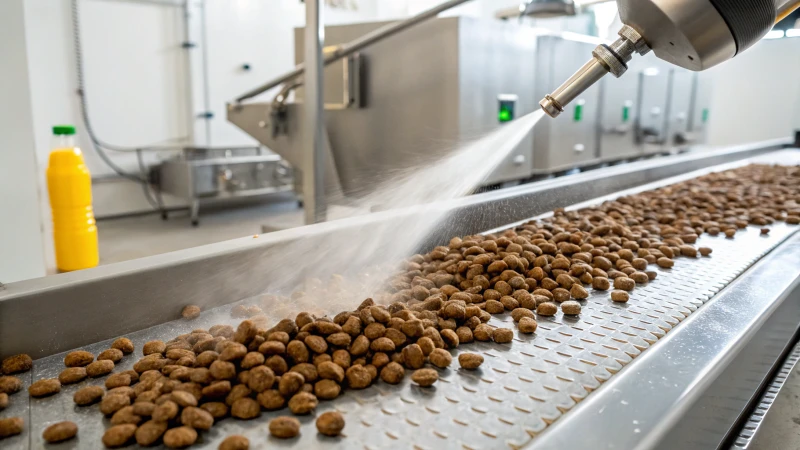
Making homemade dry dog food is a rewarding way to ensure your pet receives balanced nutrition
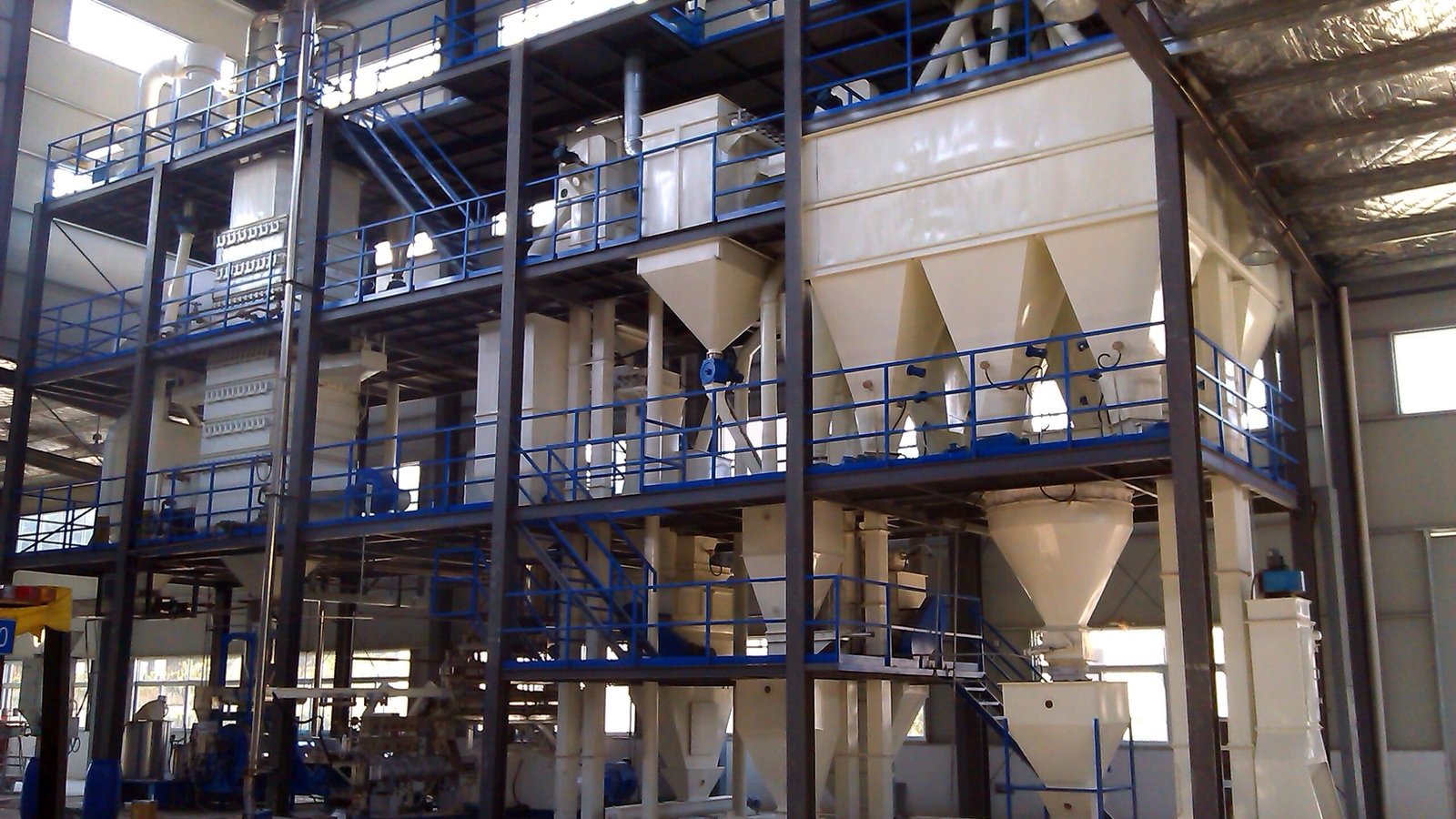
Making homemade dry dog food is a rewarding way to ensure your pet receives balanced nutrition

Making homemade dry dog food is a rewarding way to ensure your pet receives balanced nutrition

Making homemade dry dog food is a rewarding way to ensure your pet receives balanced nutrition

Making homemade dry dog food is a rewarding way to ensure your pet receives balanced nutrition
let’s talk about how we can help you achieve your goals and take your business to increase !
Tell us as specific as possible of your needs.
We will work on the best solution & quote according to your requirements.
We will start production after getting your approval and deposit, and we will handle the shipment.
· Don’t worry, we hate spam too !
· Call only when multiple emails unanswered !
We use cookies to improve your browsing experience, to analyze traffic, and for advertising purposes. You can accept all cookies, reject non-essential ones, or customize your preferences. For more details, see our Cookie Policy.